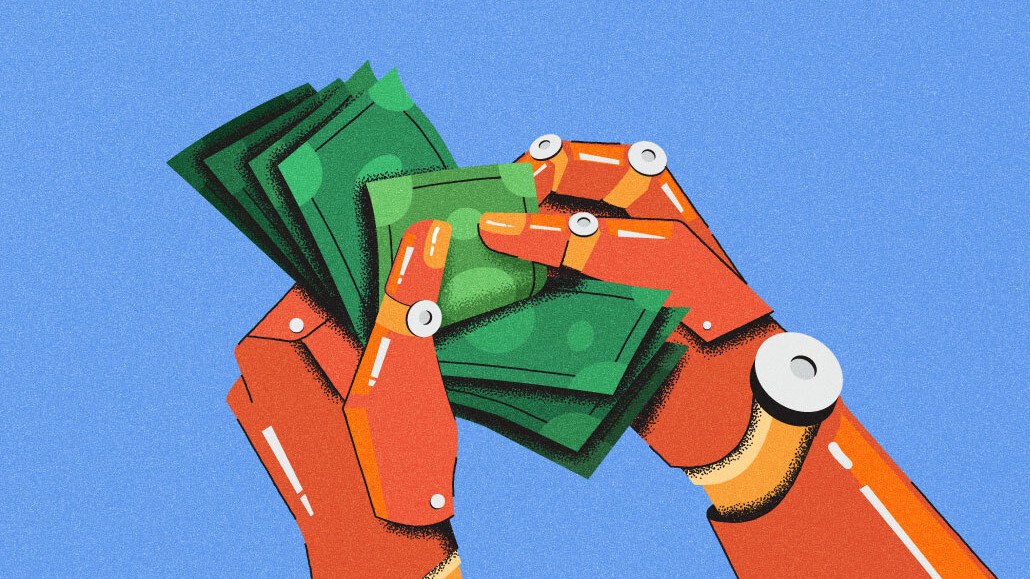
For its first several decades, the upfront marketplace — the selling season in which billions of dollars are placed ahead of the upcoming TV season — was in some ways based on relationships between TV sellers and agency buyers.
Now, however, there’s a new participant that’s quietly made its presence felt in the upfront — this year more than ever: programmatic investment.
Several heads of investment at media agencies acknowledged that a larger percentage of their upfront spend on behalf of their clients is being handled programmatically, with hands-on-keyboards rather than handshakes.
“We’re seeing an uptick in [programmatic], but I think that’s just a sign of the maturation and where we sit from a business perspective and how agencies and sellers will be doing business in the future,” said one head of investment who spoke on condition of anonymity.
The buyer cited optimization and keeping order across a wider swath of video investment options as the prime motivator to cutting deals through machines rather than relationships. “I’m talking about optimization to reach and frequency across all of video — that’s why it’s important,” the buyer explained. “As opposed to you buy one thing via direct IO [insertion order], and then buying the rest of it programmatically. You lose vision of where all the pieces are playing. If you can do it programmatically, you can have it all in the same place and optimize everywhere.”
More precise targeting is another motivation, said another head of investment who also declined to speak for attribution.
“[It’s] more targeted, [and we] could do it on a shorter term basis,” said the buyer. “There’s still enough options out there that they’re still protected and don’t need to worry about huge scatter premiums.”
But it’s also a negotiating tactic, a way of having extra spending clout in the buyer’s pocket. Added the second buyer: “Why not come up with a conservative number that we think we’re going to get to [programmatically] and use that in the negotiation? So when [sellers] say, ‘You’re down $40 million vs. year ago’ — no, I’m probably up $10-20 million with you, because we’re going to spend $50-60 million programmatically.”
Dave Simon, general manager of Moloco’s streaming and CTV DSP business, argued that the shift has something to do with what he sees is product more than content being sold by video sellers — which again plays into the transactional nature of a programmatically handled upfront and away from relationships.
“Buyers today expect different kinds of outcomes, and the ad formats, the targeting the integrations with clean rooms —all of that is in the service of trying to achieve this product lead sale,” said Simon. “Content is important, because content is what gets the eyeballs in. But buyers are no longer making bets on the content being the proxy for the purchase of their product. They’re asking streaming companies and media companies to do more on the product side.”
Ultimately, it’s about flexibility, said Simon, who thinks programmatic investment could actually reach 50% of upfront investment, up from what he believes was 30% in 2023. “Advertisers are choosing optionality over lower prices through reservation,” he said. “They need flexibility to make sales — they need to understand that their dollars are working more effectively than they have in the past.
“It’ll be really interesting to see how these deals in the upfront actually get executed programmatically,” added Simon. “Is it all programmatic guaranteed? Is it PMP? Are there data elements that are have to be brought in?”
As Digiday reported yesterday, the next week or two will determine how the upfront plays out.
More in Media Buying

Ad Tech Briefing: Big Tech won 2025 (even when it lost)
How AI, commerce media and scale reshaped ad tech in 2025 to the benefit of Big Tech.

How brands shifted marketing and media strategies through year of tariffs
Marketers share how they navigated the maze of tariffs and regulatory changes this year.

Media Buying Briefing: Omnicom Media execs begin their pitch outreach ahead of an expected new-business glut
Omnicom’s acquisition of IPG is only a few weeks old, but its combined offer to the market will soon be put to the test as it meets with consultants.








